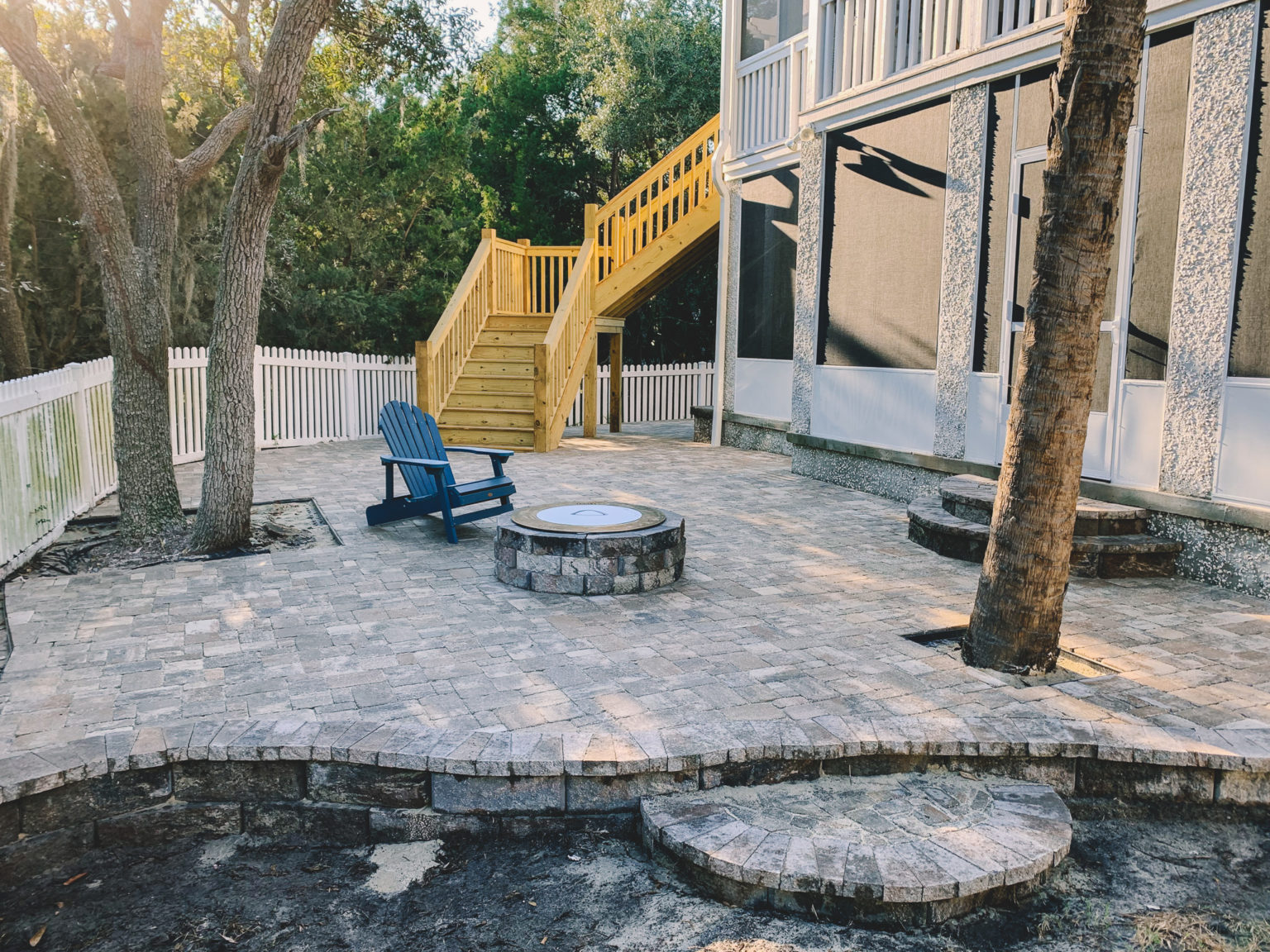You don’t need to confine your living space to the inside of your home. Your backyard or side yard can offer a paradise of fresh air, natural light, plants, and flowers. Building an dutdoor deck ties these two living spaces while also adding to the value of your home.
Think of a deck as the perfect connection from inside to outside. An outdoor deck elevates users from the ground and provides a unique view of your property and beyond. Decks also can be a centerpiece of outdoor social life, a gathering place for barbecues, parties, or even restful solitude.
Types of Decks
Freestanding outdoor decks
Freestanding decks, also called floating or ground-level decks, hug closer to grade than attached decks. You can build these decks alongside the house or anywhere within the yard.
Many areas don’t require building permits for outdoor deck designs less than a certain height above grade (often 30 inches) and not built over a basement or lower story. The deck area may not be part of an accessible route to either of these lower areas. The deck should still follow all applicable building codes.
Attached or fixed decks
Attached, or fixed, decks are more elaborate structures than freestanding decks. They may be taller, require special footings, use guards and handrails, and attach to the home with a ledger board. Because this deck design is complex, most homeowners will hire a contractor or other professional to build an attached deck. Attached decks better integrate with the home, compared to freestanding decks.
How Do You Build a Deck?
Building a new outdoor deck will require all of the following steps, while renovating a deck may involve less work. Building a new deck usually takes between 1 and 3 weeks. The homeowner meets with the deck builder to discuss their vision for the deck. The builder may advise the homeowner on appropriate styles and designs.
Next, the team draws up detailed blueprints and prices out materials to create a solid cost estimate for the homeowner. The builder submits deck plans to the building department.
City officials will visit to mark the site so digging doesn’t damage underground services. They prepare the site by staking out string around the outline of the deck, and removing any necessary sod.
After establishing the position of the piers and footers, the builders create the the deck: dig the holes; set the piers and footers; install the ledger board on the house; install the posts, followed by beams and joists. After they establish the general structure, they attach and trim the decking boards.
They add additional features, such as stairs and railings. If needed, they stain the deck, and seal it for weather resistance.
What Materials are Used in Outdoor Decking?
Pressure-treated wood: The most economical choice is pressure-treated wood. Southern yellow pine, which is pressure-injected with chemicals that help the wood resist rot and wood-boring insects, is popular. One disadvantage to pressure-treated wood decking is that the wood splinters easily and isn’t safe for walking on with bare feet. Be sure to always coat pressure-treated deck materials on top to extend their durability.
Composites: Most composite material is made of recycled plastics and wood fibers. Wood composite is a popular material due to its softness underfoot and durability. Wood composite decks don’t ever need staining or sealing. However, colors can fade over time, especially in sunnier areas. While composites are low-maintenance, they are not maintenance-free. Like other outdoor decking materials, you must periodically clean composite wood of moss, mold, and mildew, especially if the deck is in shade.
Fiberglass: “Fiberglass deck material is very popular now,” said Chris. “It can be painted or stained and it lasts forever.” Slip-resistant fiberglass panels overlap to form a continuous solid surface, which is beneficial when decking over a lower area needs to stay dry. Fiberglass deck panels do not rot, rust, or harbor mildew; which makes this material ideal for high-moisture conditions.
Tropical hardwoods: Ipe and tigerwood are two common species of tropical hardwoods used for decking materials. These dense woods are difficult to cut and drill, but their density means that the deck’s longevity will beat that of pressure-treated wood, redwood, and cedar. Because of their natural fire resistance, building codes may allow some tropical hardwoods in situations where other woods aren’t an option. Tropical hardwoods are expensive—but they may help both the deck and the home maintain value over the years, even into resale.
Redwood and cedar: Redwood and cedar are softwoods mainly sourced from western states. These materials are a good compromise between expensive tropical hardwoods and pressure-treated wood. These kinds of wood are imbued with natural tannins and oils, and do not require chemical preservatives.
How Much Does it Cost to Build a Deck?
Deck-building costs are highly variable. They depend on factors like decking materials, condition of the site, if it’s on the water, grade, number of decks and their height, plus special items like glass or railings. Generally, you can expect decking material to cost around $20 to $30 per square foot for composites or tropical hardwoods like teak. Overall, total costs generally range from $15,000 to $30,000.
Decks bring joy to so many homeowners by expanding their living and entertaining area, and by offering such practical access to the outdoors. Coastal Contracting has helped homeowners throughout the Savannah area plan and build outdoor decks.
